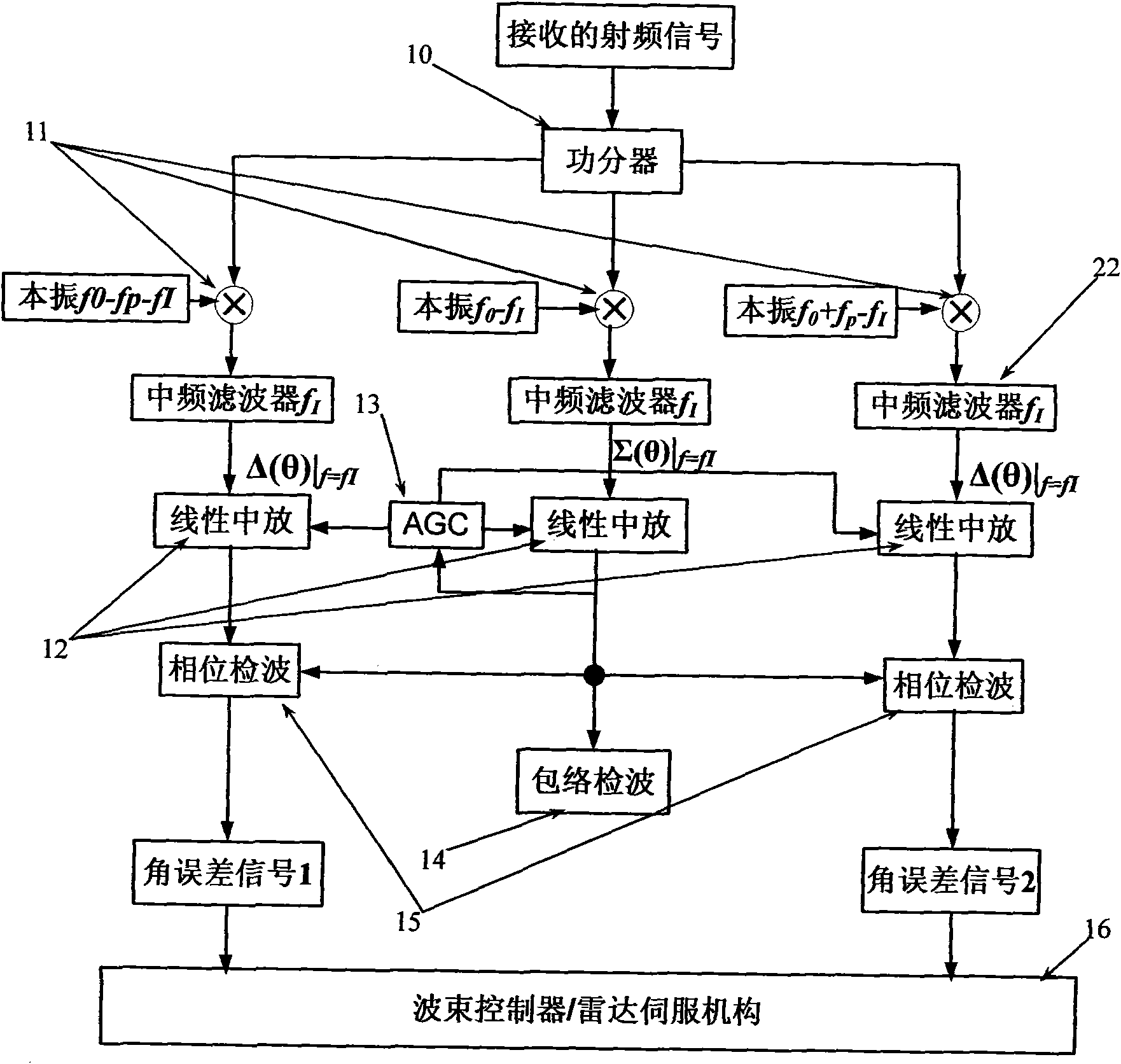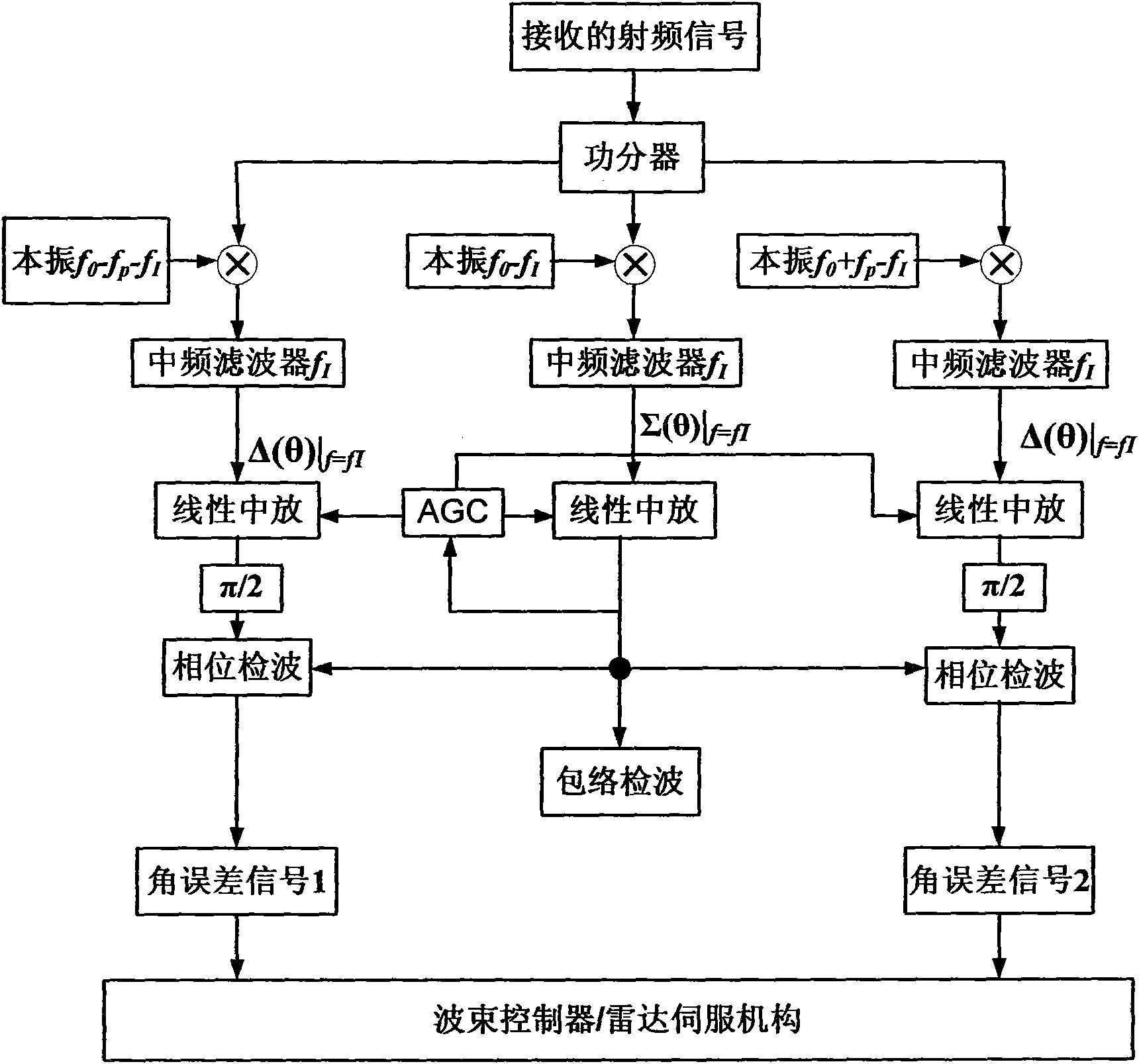Monopulse radar system based on time modulation antenna array
A single-pulse radar, time modulation technology, applied in radio wave measurement systems, radio wave reflection/re-radiation, utilization of re-radiation, etc., can solve the problem of increasing the acquisition angle error signal time and other issues
- Summary
- Abstract
- Description
- Claims
- Application Information
AI Technical Summary
Problems solved by technology
Method used
Image
Examples
Embodiment 1
[0101] Example 1: Phased array monopulse radar device based on time-modulated antenna array (high-order sideband suppression)
[0102] Refer to figure 1 with Figure 6 In this embodiment, a time modulation array composed of N=16-element omnidirectional array units is adopted, and the number of array elements opened in each time step is M=8. In order to obtain a good performance receiving sum and difference beam, that is, a higher gain sum and difference beam, a lower difference beam zero depth, and a larger difference beam zero slope, the differential evolution algorithm (Differential Evolution Strategy) is used in this embodiment. The design variables are determined, and the static excitation amplitude of the time modulation array and the spatial position of the unit are used as design variables in this embodiment to optimize the performance of the receiving and difference beam. In addition, sideband radiation higher than the first sideband that is not beneficial to the system w...
Embodiment 2
[0105] Embodiment 2: Phased array monopulse radar device based on time-modulated antenna array (no high-order sideband suppression)
[0106] Refer to figure 1 with Figure 6 In this embodiment, a time modulation array composed of N=16-element omnidirectional array units is still used, and the number of array elements opened in each time step is M=8. In order to obtain a good receiving sum and difference beam, that is, a higher gain sum and difference beam, a lower difference beam zero depth, and a larger difference beam zero slope, the differential evolution algorithm is used in this embodiment to determine the design variables. The static excitation amplitude of the time modulation array and the spatial position of the unit are used as design variables in this embodiment to optimize the performance of the receiving and difference beam. In addition, in this embodiment, sideband radiation higher than the first sideband that is not beneficial to the system is not suppressed as one ...
PUM
 Login to View More
Login to View More Abstract
Description
Claims
Application Information
 Login to View More
Login to View More - R&D Engineer
- R&D Manager
- IP Professional
- Industry Leading Data Capabilities
- Powerful AI technology
- Patent DNA Extraction
Browse by: Latest US Patents, China's latest patents, Technical Efficacy Thesaurus, Application Domain, Technology Topic, Popular Technical Reports.
© 2024 PatSnap. All rights reserved.Legal|Privacy policy|Modern Slavery Act Transparency Statement|Sitemap|About US| Contact US: help@patsnap.com










